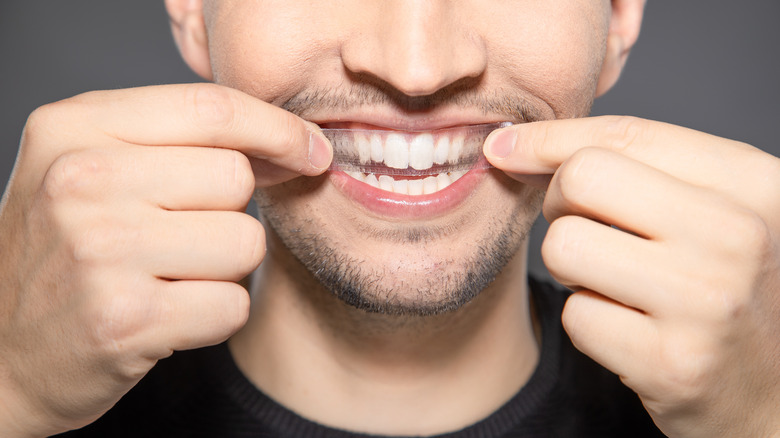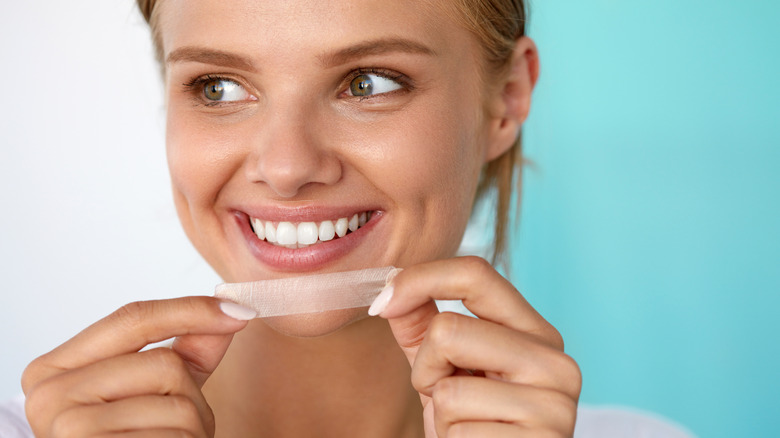What Happens To Your Teeth When You Use Whitening Strips
Teeth whitening strips are an over-the-counter treatment to lighten stained or discolored teeth. A bright smile is a great way to boost your confidence, but how exactly does this treatment work?
Most whitening strips use hydrogen peroxide or carbamide peroxide to bleach stains on your teeth (via Healthline). Both of these peroxides go through the enamel of your teeth, which is the outermost layer. They then enter the dentin layer, which is just beneath the enamel, and bleach the chromogens. According to Healthline, chromogens are "pigmented molecules found inside and outside your tooth that cause staining."
Staining on your teeth can make them look yellow, dull, or unevenly colored. There are two main types of staining: extrinsic and intrinsic. Extrinsic staining is typically caused by environmental factors like smoking, drinking coffee, drinking wine, eating dark berries, taking antibiotics, and exposure to some metals like iron or copper. These factors can stain the outside of your teeth. Intrinsic staining causes discoloration on the inside of your teeth. It can be caused by many factors including enamel erosion from age, genetics, taking antibiotics, exposure to too much fluoride, and tooth development disorders. Whitening strips can help with both types of staining.
There are some risks associated with using whitening strips
Although whitening strips are easy to access and use, it's important to be aware of the potential side effects of whitening your teeth. The most common side effect of whitening strips is tooth sensitivity. This is because the dentin layer of your tooth is exposed during the whitening process (via Verywell Health). If you normally have sensitive teeth, talk to your dentist about the best whitening options for you.
The soft tissue of your gums can also become irritated during the whitening process. Frequently using whitening strips can lead to gum irritation and inflammation. Whitening too often can eventually turn your teeth a gray or translucent color instead of the bright white that many people desire.
Talk to your dentist before using whitening strips. After reviewing your dental history, they can determine which kind of whitening treatment will provide the best outcome. Severe staining, for example, may require professional whitening treatments in order to see results.


